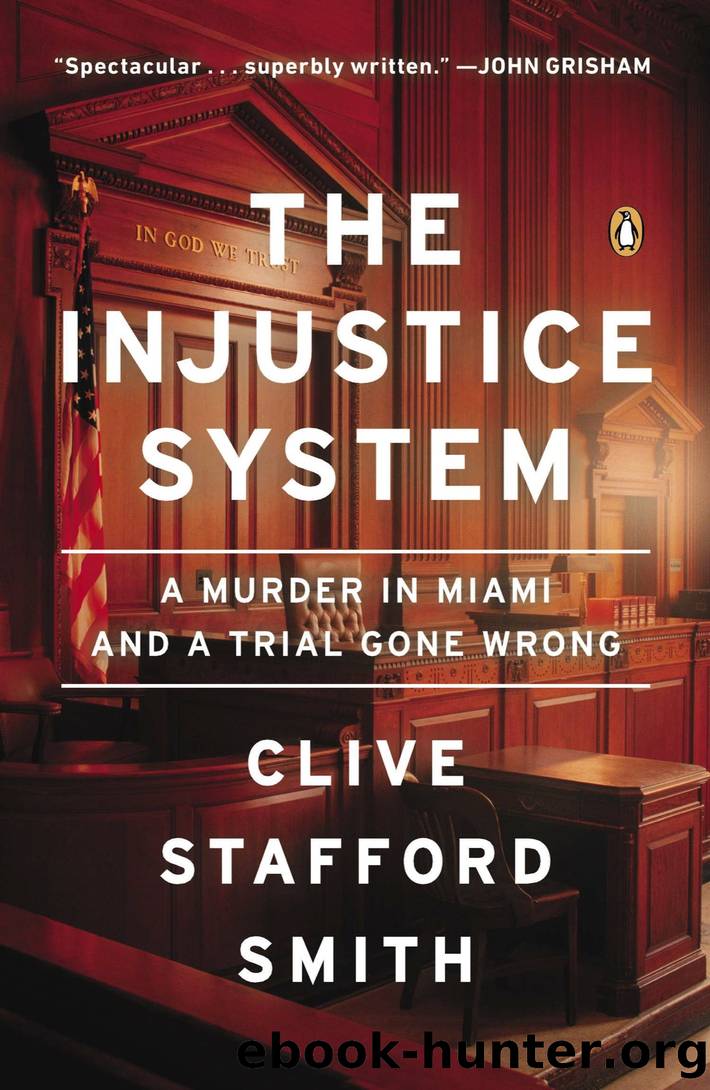The Injustice System by Clive Stafford Smith

Author:Clive Stafford Smith
Language: eng
Format: epub
Publisher: Penguin Publishing Group
Published: 2017-04-10T17:11:46+00:00
How could a member of a Colombian cartel be in the room across the hall from the scene of a double murder and yet attract no attention from the police? And how had the chief detective on the case come to the conclusion that Mejia âseemed legitâ simply by standing at the door and peering into his hotel room? Was he simply inept, or was there a darker explanation? In my experience, plain bias is normally the reason the police miss key evidence, but on some occasions good old-fashioned corruption should also be considered.
If the goal of the cartels was to get their cocaine into South Florida, hundreds of balls were in play at any given moment, and the goalkeeper was a policeman wearing a blindfold who periodically turned around and kicked a few balls into his own net. Gradually, over the years, the bigger players have begun telling their stories, as some did in the extraordinary documentary Cocaine Cowboys, released in 2006. Drugs would come in on mules traveling on cruise ships or commercial aircraft. They would come in on high-speed powerboats that slid into the Everglades, or on light aircraft that ducked under the radars. âHell, they even fly coke in from a ship in one of those remote-controlled toy planes and land it on a bayshore condo,â said Doug Morris of the Dade County marine patrol. 7 If the DEA stopped the occasional shipment, the loss represented a very small tax on the business.
Drugs brought violence and corruption. By 1986 there was plenty of both in the Miami Police Department (MPD). As Miamiâs population explodedâin 1980, 125,000 Cubans came to South Miami in one flotillaâthe MPD undertook a massive hiring spree. Miami had become the murder capital of the United States, with a higher homicide rate than New York or Washington, D.C. Training police officers takes many years and is no easy task. In late 1985 the Miami chief of police, who was reputed to be barely competent himself, was leading what one commentator described as a force of âtoo many ill-trained, undisciplined, anarchic and corrupt officers.â 8
A branch of the MPD called Centac (the Central Tactical Unit) was put in charge of stemming the flow of drugs. It was made up mainly of homicide detectives, drawn from the same office as Detective John Buhrmaster. Centac burned brightly for a few months, but there were pervasive allegations of corruption against its lead officer, Raúl DÃaz, who was accused of taking kickbacks from the people he was supposed to be arresting. Another MPD officer, Aldo Suero, got stung when he went shopping on the black market for a bazooka so he could blow the doors off the U.S. Customs building in Miami and steal the seized cocaine. 9
An even more notorious instance of corruption was dubbed the Miami River Cops case. In 1985, just as the Moo Youngs were evidently wading deeper into the narcotics business, six homicide detectives were arrested and charged with murder and drug dealing. The MPD officers had been ripping off the drug dealers.
Download
This site does not store any files on its server. We only index and link to content provided by other sites. Please contact the content providers to delete copyright contents if any and email us, we'll remove relevant links or contents immediately.
The Borden Murders by Sarah Miller(4235)
The Secret Barrister by The Secret Barrister(3614)
Police Exams Prep 2018-2019 by Kaplan Test Prep(2482)
Coroner's Journal by Louis Cataldie(2423)
The Splendid and the Vile by Erik Larson(2354)
Terrorist Cop by Mordecai Dzikansky & ROBERT SLATER(2035)
A Colony in a Nation by Chris Hayes(1880)
My Dark Places by James Ellroy(1874)
The Art of Flight by unknow(1802)
Black Klansman by Ron Stallworth(1745)
Objection! by Nancy Grace(1734)
A Life of Crime by Harry Ognall(1694)
The New Jim Crow by Michelle Alexander(1655)
American Prison by Shane Bauer(1620)
Anatomy of Injustice by Raymond Bonner(1619)
Whoever Fights Monsters by Robert K. Ressler(1573)
Invisible Women by Caroline Criado Perez;(1568)
Obsession (The Volkov Mafia Series Book 1) by S.E Foster(1536)
A is for Arsenic: The Poisons of Agatha Christie (Bloomsbury Sigma) by Kathryn Harkup(1504)
